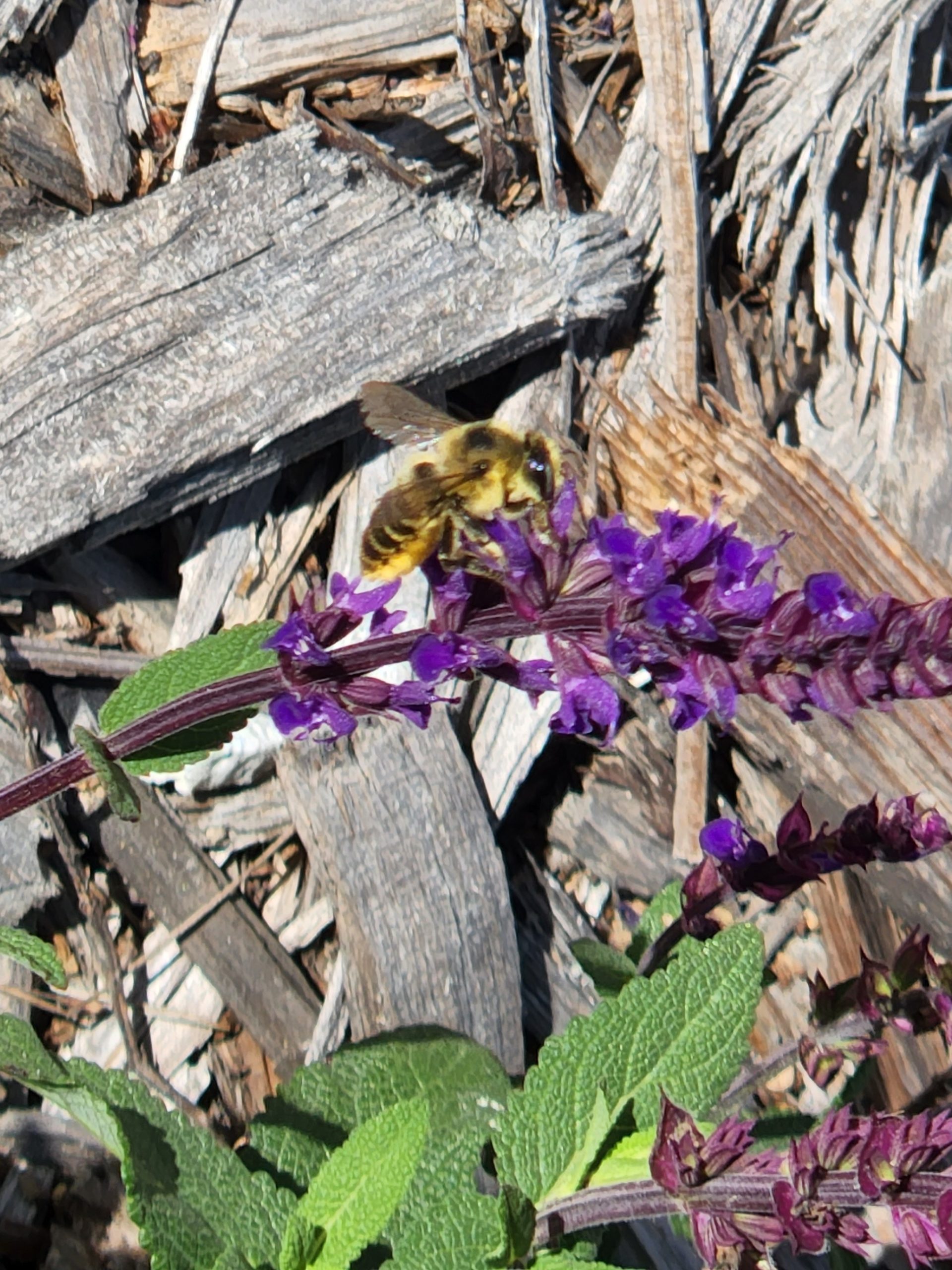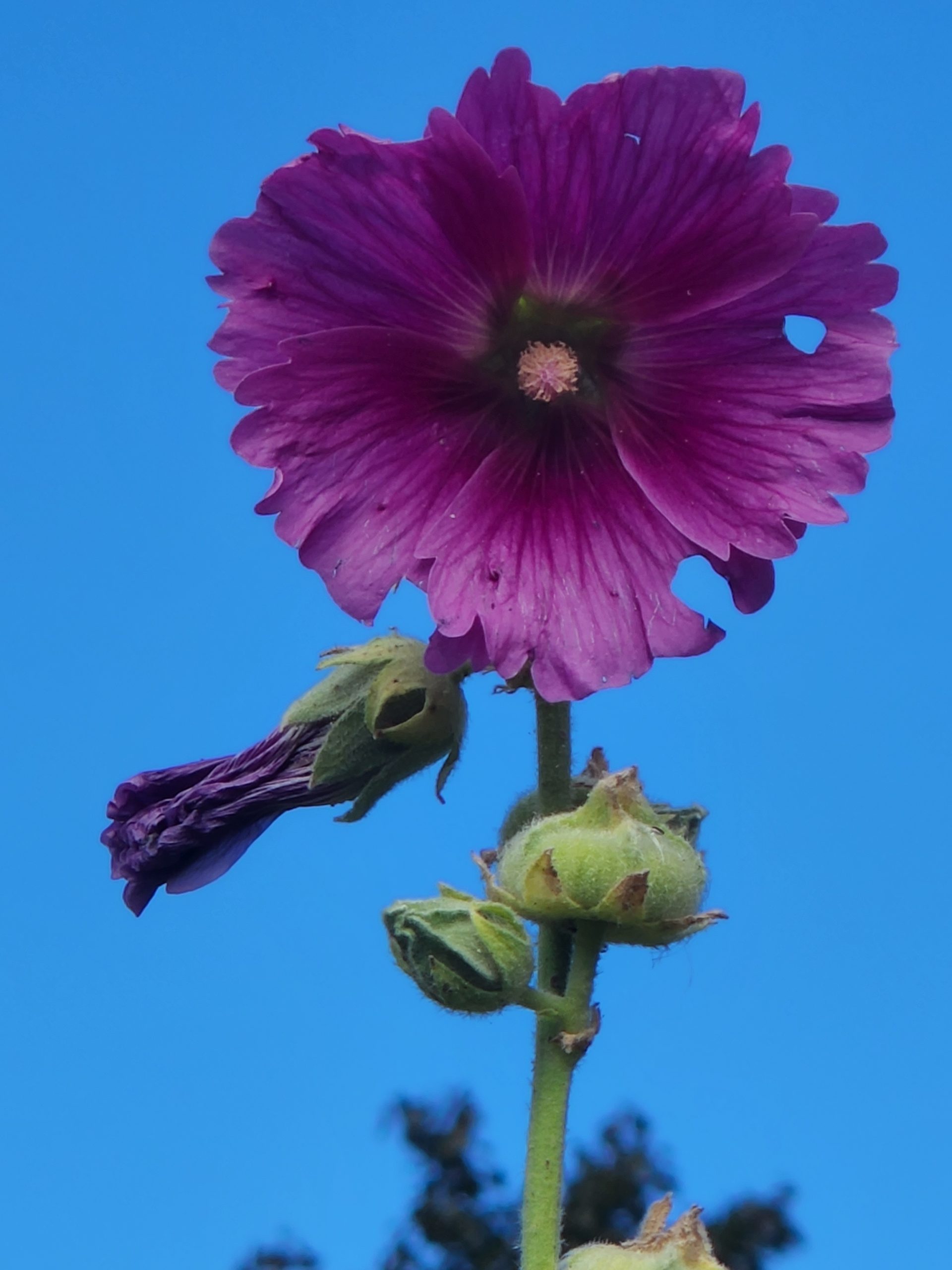

Speak of pollinators, and most people imagine the honey bee and the constructed hive boxes. Recently a focus on the Rusty Patch Bumblebee has extended the perception modestly. There are however myriad pollinators, and even a diverse range of types of bees. The Arboretum will host a broad spectrum of plants that support both pollinators and butterflies, and we hope to see examples of this diversity.
Cindy Lupin appreciates the presence of the extensive display and writes about one type of bee she has observed:
“My husband and I enjoy walking our dogs at the Arboretum. Last week I noticed a foraging bee within one of the flower circles. She was a Leafcutter Bee.
I watched as she gathered pollen on her bright yellow underside while seeking nectar from the flowers.
Why is this bee called a Leafcutter Bee instead of a Yellow-bottomed Bee? Because she cuts small circles from leaves or flowers to cushion and separate her eggs within a hollow stem, hole or tube.
You may have seen these holes in your garden. They do not damage the plants.
Leafcutter eggs remain safe in their hollow stems to develop all winter. You may wish to leave some plant stems up in your garden for them. In the spring adult Leafcutter Bees emerge to carry on their life cycles for one more year.
If you are intrigued by bees, I highly recommend “My Garden of 1000 Bees,” a NATURE documentary shown on PBS. There you will meet a Leafcutter Bee and other fascinating wild bee species in action.
Even now, before winter, you can watch for the bee with a bright yellow underside and the circular holes she leaves behind.”